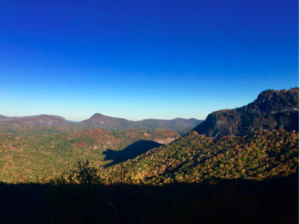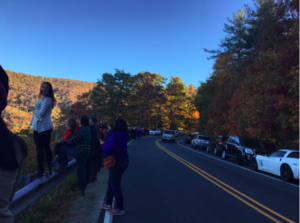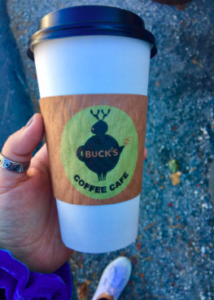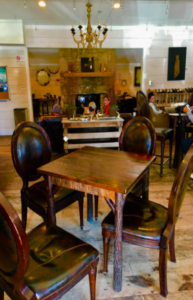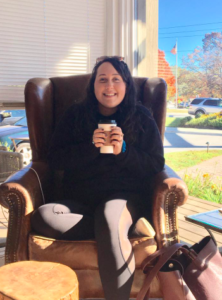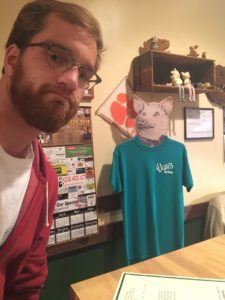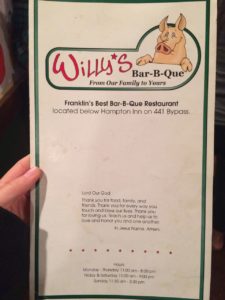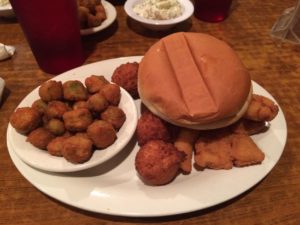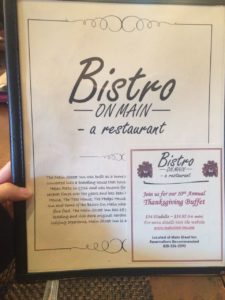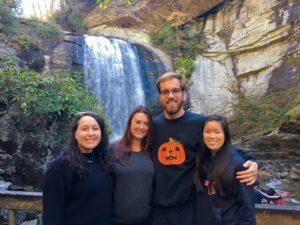By Dani Halliday, 2016
Cheryl Strayed’s life was thrown for a loop when her mother died. She could not deal with the pain of being alone, that she seemed to be the only one in her family at all distraught, and sought out some unsavory ways to cope with her pain. She cheated on her husband, leading to a divorce (a very amicable one though). She got a new boyfriend, Joe, who got her into using heroine as another escape from reality. Finally, after getting away from Joe, Cheryl found a book on the Pacific Crest Trail (PCT), and so began her journey to walk the entire thing.
Cheryl was lost in her life and the PCT gave her some direction. Her worries and stresses had a reason and she met others who were going through the same physical journey as her. She was able to do what many thought was impossible for her, yet she proved them wrong. She completed the PCT and found peace with her mother’s death through her journey.
Body:
The hike itself was probably my favorite part of the book. It was funny, full of energy, and you could feel her healing throughout her journey. As a woman, I was very interested in her solo hike and her ability to struggle through it alone. Granted, she wasn’t alone. The hikers had her back and she always found people to help her, whether it was giving her a meal, a new book to read, or a ride to the next leg of the trail. All of the hikers had a reason to be on the trail; no one just hikes it just because they can. Cheryl notices immediately that Doug has been through something difficult, but we don’t learn what. Albert, who was hiking with his son, wanted to hike it before he died as a lifelong dream. Having a reason, whether a dream or as an escape, is a main aspect of hiker culture on the PCT.
The hiker culture in this book shows the amount of comradery you can feel with someone whom you’ve never met before. Cheryl felt so much pride when Greg passed her on the trail and already knew her name. It validated her as a true PCT hiker. I loved the aspect of trail names: the Preppies for Doug and Tom, the Statistician for Greg, Matt and Albert were the Eagle Scouts, and Cheryl herself was the Hapless Hiker, due to her lack of experience. She even named her backpack, Monster. The hikers knew it as Monster as well.
One aspect of the hiker culture I was fascinated by was the women on the trail. Stacy and Trina were two women that Cheryl traveled with for a while. There were other women who she met, but they traveled with their husbands/boyfriends. Stacy and Trina hiked together for a while and split up, leaving Stacy to finish by herself. Stacy and Cheryl were very different, and I think that Stacy was more of the “real PCT hiker.” Cheryl was more concerned with how the others viewed her the entire time, while Stacy was focused on the hike. After my first trip abroad, to the Andes Mountains in Peru, I have wanted to hike the whole Inca Trail. I did two days-worth, but the whole thing is something I feel I must do. I don’t know if I could be like Cheryl and do it alone, but I would like to think I would be more like Stacy in how I cared more about the trail and the hike, rather than how I look to the world around me. There is not too much out there about solo female travelers on a rigorous hike. I feel as if the best way to research it is to do it yourself. Maybe I will join their ranks one day.
Cheryl Strayed is not her real name. Yes, she changed her name after her divorce, but Strayed is one that she chose. There is so much symbolism in her name. She had strayed away from her old life and was looking for a new path. The irony of people reading the necklace her friend gave her as “starved” instead of her last name gave it a little humor, but the relevance of her name is significant. Names are of great importance in this book. Cheryl needed to change her name to become a new person after everything she had been through in her pre-PCT life. She had strayed away from who she really was after the death of her mother and needed to find herself once again, and the PCT helped her do that.
Cheryl needed to travel alone so she could really reflect and figure herself out. Being alone does that to you. Being alone in a forest or barren desert must be even more difficult. There is no hiding from yourself when you are alone and Cheryl recognized this. This was a personal journey to prove that she was still capable of accomplishing things and that she could be without her family. She needed to be alone to prove it to, not only the people around her, but more so to prove it to herself.
The overall point of the book is to show how the journey on the PCT healed Cheryl of all of her woes and problems, but this was not the case. Yes, she came to terms with the death of her mother and that she and Paul would remain friends, but nothing else, but Cheryl did not change nearly as much as I had expected. Throughout her journey, she always had to be seen as pretty and desirable to the men she met. She wanted to be one of the PCT hikers, but then she also wanted them to want her sexually. She mentioned her minor sex addiction at the beginning of the book, but she did not grow out of this while on the trail. I expected more from her. At the music festival in Ashland, she immediately got dressed up and found a man to have sex with, whom she would never see again. She brought an entire roll of condoms on the trail with her. Even though the other hikers took them from her, there was no way anybody would have used an entire roll while hiking. At the end of the trail, of course a man came up to her to give her his number, and she never called him. Cheryl had to be desirable all the time, she had to fit in all the time, and she had to have people thinking about her all the time. She did not grow up nearly as much as I had hoped for throughout her journey, which is one huge criticism I have for the book and the author in general.
Wild: From Lost to Found on the Pacific Crest Trail showed the personal journey and the physical journey that Cheryl Strayed went through on her hike. Four months alone exposed the inner strength that she was unaware that she had. Even though she destroyed her feet, lost almost every one of her toenails, and came out of it flat broke, Cheryl accomplished what many thought was an impossible feat for her. I strive to have this inner strength and the emotional and physical journey that she went through made this a good piece of travel writing worth reading, especially for a young women who feels she may be straying away from who she is.
Chery Strayed, Wild: From Lost to Found on the Pacific Crest Trail, Vintage Books 2012, 315 pages, $15.95

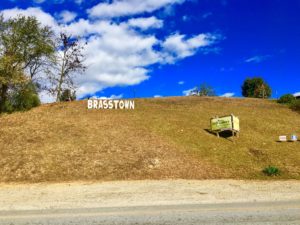 Past a gas station screenshot from the ‘60s was the town of Brasstown. Composed of a mail center, library, and gas station, the surrounding hill was a collection of homes bordered with signs encouraging the election of Trump/Pence.
Past a gas station screenshot from the ‘60s was the town of Brasstown. Composed of a mail center, library, and gas station, the surrounding hill was a collection of homes bordered with signs encouraging the election of Trump/Pence.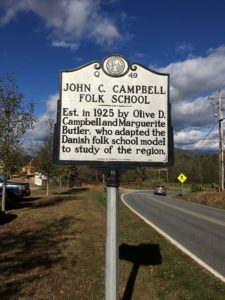 Embedded between conversations of life and relationships, he spoke about the history of the Folk School in milestones. Between the dedicated commitment to working the land and building a new system of education was a history of community. His work focuses on documenting the stories of the people who populate the folk school. He mentioned that his interviews from the past few years have been especially interesting since he is recording and telling the story of the grandchildren he originally spoke to in the formation of the folk school in the 1920s. The motto of the folk school, as seen by the countless signs and embossing is “I sing behind the plough.”
Embedded between conversations of life and relationships, he spoke about the history of the Folk School in milestones. Between the dedicated commitment to working the land and building a new system of education was a history of community. His work focuses on documenting the stories of the people who populate the folk school. He mentioned that his interviews from the past few years have been especially interesting since he is recording and telling the story of the grandchildren he originally spoke to in the formation of the folk school in the 1920s. The motto of the folk school, as seen by the countless signs and embossing is “I sing behind the plough.”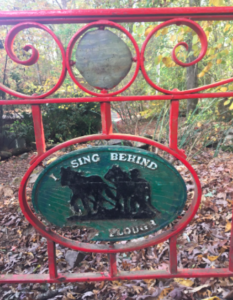 The crafts of the folk school were varying in discipline and medium. Kaleidoscopes, mosaics, and pottery sprinkled the wooden show room with color. Their craft store was composed of aisles of colorful art crafted throughout North Carolina. Each stand of work had the name of the artist and the home of the craft on a small paper in front of the pieces.
The crafts of the folk school were varying in discipline and medium. Kaleidoscopes, mosaics, and pottery sprinkled the wooden show room with color. Their craft store was composed of aisles of colorful art crafted throughout North Carolina. Each stand of work had the name of the artist and the home of the craft on a small paper in front of the pieces.